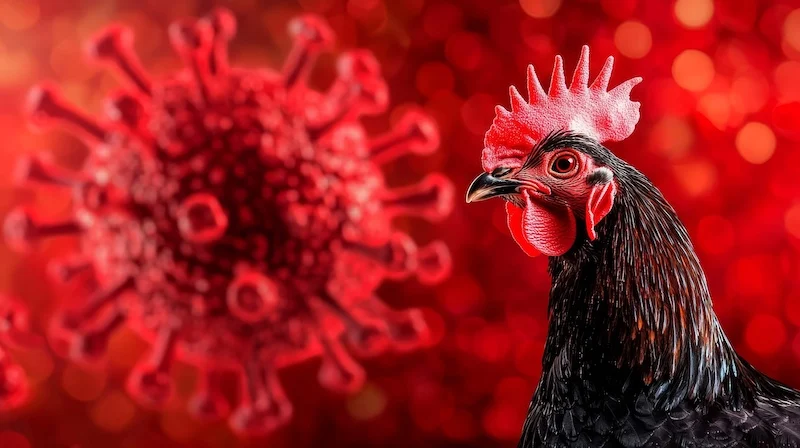By Chris Wolski
Summary:
While the current risk of human-to-human transmission of H5N1 (bird flu) remains low, the College of American Pathologists is launching a new testing program to help U.S. labs better detect and subtype the virus in preparation for potential future outbreaks.
Takeaways:
- All current human H5N1 cases stem from animal-to-human transmission, but the virus could mutate and spread more widely.
- CAP’s new proficiency testing program will help labs distinguish H5N1 from seasonal flu strains using realistic sample simulations.
- Labs are encouraged to proactively prepare by reviewing testing protocols, consulting public health authorities, and targeting high-risk populations like dairy workers.
In the wake of the COVID pandemic, H5N1 or bird flu has been the new virological boogeyman on the block with dire predictions about it contaminating the food supply and jumping to humans. While those concerns are real—poultry and livestock have contracted the influenza A variant and there have been human deaths—the overall risk at this time is low, according to Benjamin T. Bradley, MD, PhD, FCAP, a member of the College of American Pathology (CAP) Microbiology Committee.
Turning on a Dime
Though the risk appears to be low—most viral mutations are dead ends—a small mutation can spread from other animals, jump to humans and be fueled by human-to-human contact. This has yet to happen with H5N1; all human infections have been the result of animal to human transmission. However, successful mutations can occur suddenly, according to Bradley.
“We haven’t observed any human-to-human transmission, so that’s reassuring,” notes Bradley. “[But] there’s always the threat of an influenza pandemic.”
This is partly the reason CAP is launching the H5N1 Influenza A Detection and Subtyping Program, which allows laboratories test their ability to accurately detect and distinguish H5N1 from seasonal flu strains. According to CAP, the organization is the first proficiency testing and external quality assessment (PT/EQA) provider to offer a program focused specifically on H5N1 subtyping.
The program includes two laboratory-created samples that simulate real patient specimens, allowing labs to verify their detection and subtyping processes under realistic conditions.
The program will be available this fall. Labs can visit the program website to sign up. Only U.S. labs are eligible and labs wanting to participate must sign up by July 9 to take part in this year’s program.
Preparing to Test for H5N1
Beyond taking part in the CAP program, there are several steps labs will need to take to prepare for H5N1 testing this year.
“Labs need to be proactive in determining their testing needs,” Bradley says.
These steps include:
- Determining if testing will be done in-house or sent to a reference lab
- Deciding if the lab will develop its own test
- Identifying the population that will be tested
Bradley also recommends beginning conversations with public health officials in the lab’s community or state, and to play close attention to advisories and directives being issued by the CDC. For example, in 2024, CDC advised that all hospitalized patients be tested for H5N1.
Since we’re not in a full-blown pandemic, Bradley notes that surveillance is the critical role labs can play at this time. For example, they can work with clinicians, advising on populations who should be treated. One scenario could include dairy workers who have flu-like symptoms. Over the past year, several dairy workers have become infected with H5N1. Another option is to advise that if a patient has flu-like symptoms but are negative for H1 and H3—two of the common human-to-human strains—then the patient be tested for H5 and the bird flu subtype.
Legacy of COVID
One of the legacies of the COVID pandemic is that more labs have access to advanced sequencing systems, so identifying H5N1 is easier at the laboratory level.
And while most of the commercial assays currently available can identify H5, they can’t identify the N1 subtype.
“The CAP tool will be helpful in detecting the subtype,” says Bradley.
Featured Image: Dzmitry Auramchik | Dreamstime.com
Chris Wolski is chief editor of CLP.





